Search engine rankings are tough. If you're looking to get started with SEO or build a campaign, check out this list of tips.
When it comes to SEO, there is a lot of misinformation on the internet. It seems like everyone has become an “SEO expert” in the last few years.
One common problem is that people don't know what information to trust. I recommend that you check everything you read online.
Here are some of the most effective SEO tips. They can be used for small businesses and startups as well as multinational public companies.
Содержание | Быстрая навигация
1. Rate the content in the featured clip Google.
You may have come across a Featured Snippet repeatedly in search results. It appears more and more often based on questions such as "how to create a graph in Excel".

The Featured Snippets section that appears on the first page of Google is important when posting your content.
After reviewing over 5,000 keywords, where HubSpot.com ranked first, "Featured Snippet" was shown there. When HubSpot.com was in Featured Snippet, the average click through rate on the site increased by more than 114% .
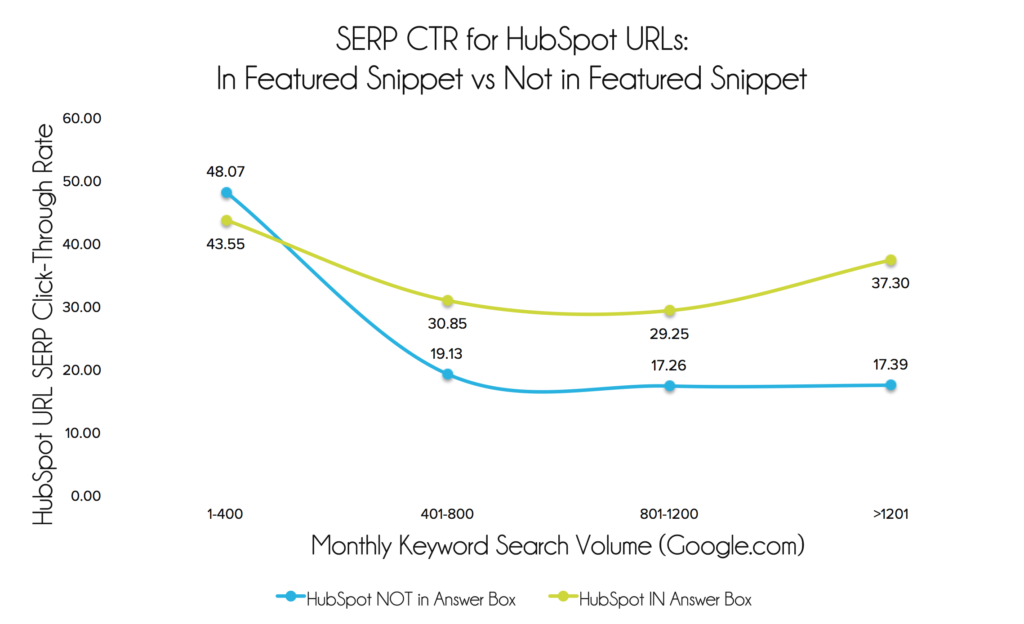
I have spent a lot of time researching the factors that greatly influence the ranking in the Featured Snippet. I found the following:
- Links don't really matter in your featured snippet if you're already ranking on the first page of Google.
- You should aim for the targeted search keyword to appear in one of the HTML headings of your content.
- Directly below the heading that contains the target keyword, you should write the answer to the question, keeping it within 54–58 words.
Google does not always include an entire paragraph of text in a recommended snippet. If you add Step 1, Step 2, Step 3, etc. to the beginning of every HTML heading in your content, Google sometimes just lists your headings. I've noticed that this is happening more and more in keywords starting with "how".
For shorter, less question-oriented keywords; for example, "Content Marketing", Google often looks at a paragraph of text rather than a step-by-step section. With these keywords, pay close attention to the structure of your page.
Googlegenerally prefers Recommended Snippet content that starts with a boolean answer. For example, the answer will start with "Start at", "First step", and so on.
You can use a tool like SEMrush to find different keywords that you rank for where there is a featured snippet.
Once you find the many features of Featured Snippet, browse the existing content and simply update it. Then you should see some improvement over the next few weeks, especially if you've already made it to the top 5 results on page 1.
2. Link Complaint.
How effective this SEO technique is depends on your type of business. For big brands, this tactic alone can generate thousands of new links with relatively little effort. However, you don't need to be a big brand to get some results.
In short, this tactic is to find when someone has mentioned you, your business, your product or service, or your content without actually linking to you. Once you find the person who did it, you can contact him and simply ask him to add a link to your site.
Sounds simple, right? Well, it is! The conversion rate and return on your time will be surprisingly high. We do this on a regular basis at HubSpot, and I've also done it on countless projects I've worked on. Here's my process for scaling it up:
Step 1: Monitor brand mentions.
The first step in this process is to find out when you are mentioned on the Internet.
My favorite selection tool (and it has a free version) is Mention (you can also use BuzzSumo for this). You can quickly set up alerts by adding any keywords related to your brand or products (I would recommend highlighting them).
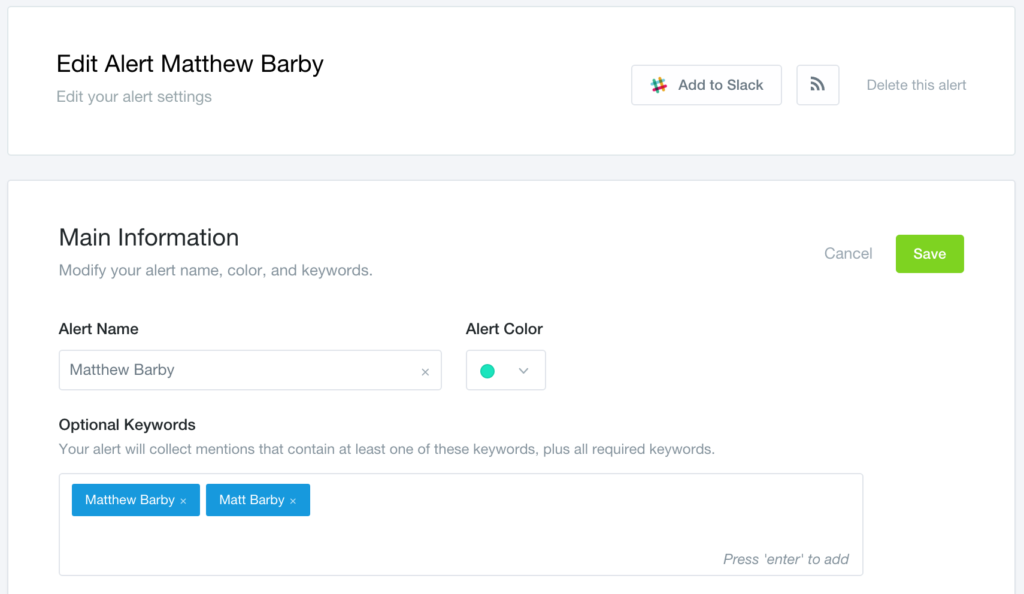
Make sure you exclude any mentions from your own site. This can be done in the settings.
Step 2. Set up daily email notifications.
Once you have configured your alert in Mention, go to Settings and then Manage Notifications. From here, you can select the option to receive a daily email digest with any mentions (I would recommend doing that).
You also have the option to receive tabletop alerts - I personally find them annoying, but if you really want to stay on top then this might be a good idea.
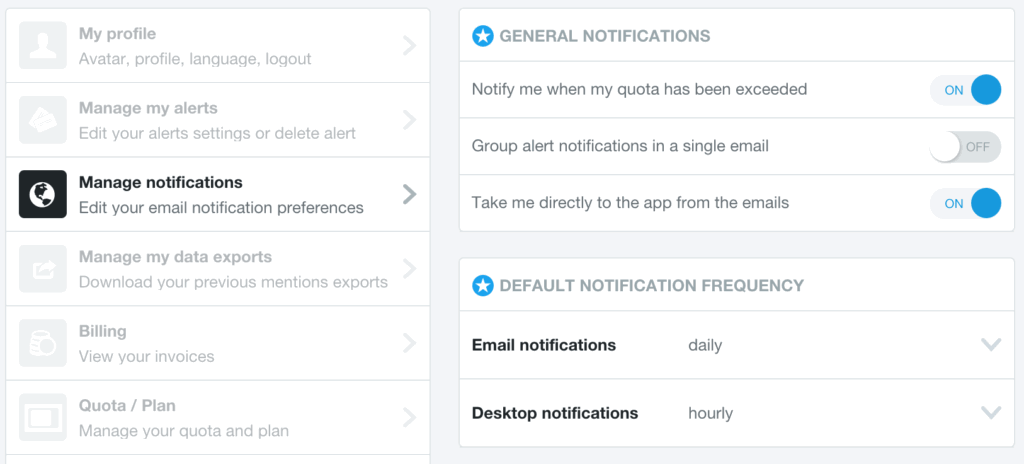
Step 3: Checking links.
You can bulk search a list of URLs to see if any of the pages contain a link to yours. Checking this daily is probably a quick manual check.
If you want to do a bulk check, you can use the SEO Tools plugin for Excel. To speed up the manual verification process, go to each web page, right-click and select View Page Source.
After viewing the source code, you can run a quick search in your web browser (CMD + F or CTRL + F) and search for your domain name. If it does not appear in HTML on a web page, then it is not associated with you.
Step 4: Collect contact information.
Once you've identified an opportunity, you'll want to find a way to contact the website owner or author to ask them to update the mention of you / your brand.
The contact page or “about us” is the best place to start, but if they don't provide an email address or don't have a contact form, it won't get you the results you want.
Step 5: Achievement.
If you manage to get the email address from the website, you need to contact them as soon as possible to add a link to their webpage. I found that the closer you do this to the post date, the higher the conversion rate.
Here's an example email template you can use:
Hello {{FirstName}} ,
First of all, I would like to thank you for mentioning {{your brand or product name}} in your recent article. It means a lot!
In the article, I noticed that you did not actually link to our site when you mentioned us. Is there a chance you can quickly update a post with a link? Here's a link to save you time searching: {{Link to home or product page}}
Thanks in advance and if you ever need more information on {{your brand or product name}}, then I will be happy to provide you with it (images, video content, etc.).
Thanks again!
{{Your signature}}
I would recommend that you use a tool like BuzzStream to manage the reach process as you can store your email templates within their platform and test response rates etc.
You can also indicate if your reach was successful for each of the websites you visit.
3. Community hijacking.
When it comes to generating traffic and link building is one of my favorite techniques. It works better in some industries than in others, but in one way or another, you can take advantage of this approach.
Hacking a community involves finding online communities that are made up of your target market or people who can reach your target market so you can build relationships with them and get them to promote your content or brand.
Here are some examples of this in action ...
Example 1: Lookbook.
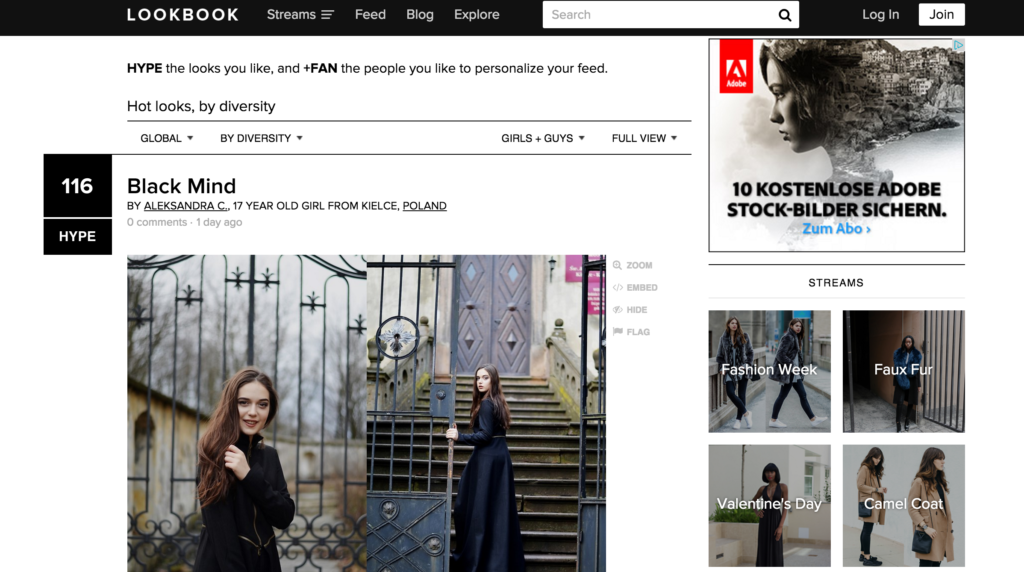
Lookbook.nu is an online community of over 1.2 million fashion enthusiasts who post their photos in a variety of outfits, mentioning each of the products that make up their outfit.
This community is full of opportunities if you are a fashion retailer. One of the main benefits is the fact that they add links to each of the products they include in their outfits - the links lead directly to the product pages.
This is the holy grail for ecommerce SEO and the traffic that will come from these links will convert at a very high rate.

The above image is an example of a garment that a user has posted on a Lookbook, with links to all the products they are wearing.
As a brand, your goal is to become popular with your site's users. You can find out how popular a user is by finding out how many "Fans" he has, as well as "Karma" points - all of which are publicly available on the profile page.
I ran a campaign targeting Lookbook users to form partnerships to offer them products in exchange for products featured on their Lookbook site. If you work with the right people it will scale well.
To find the right people, I downloaded a list of the most popular users in the community. For this, I used the Screaming Frog SEO Spider. Collected a list of all URLs on the site.
Then I exported this list to an Excel spreadsheet and filtered the URLs to show only those that were user profile pages. I could do this because all of the profile pages had user in the url.
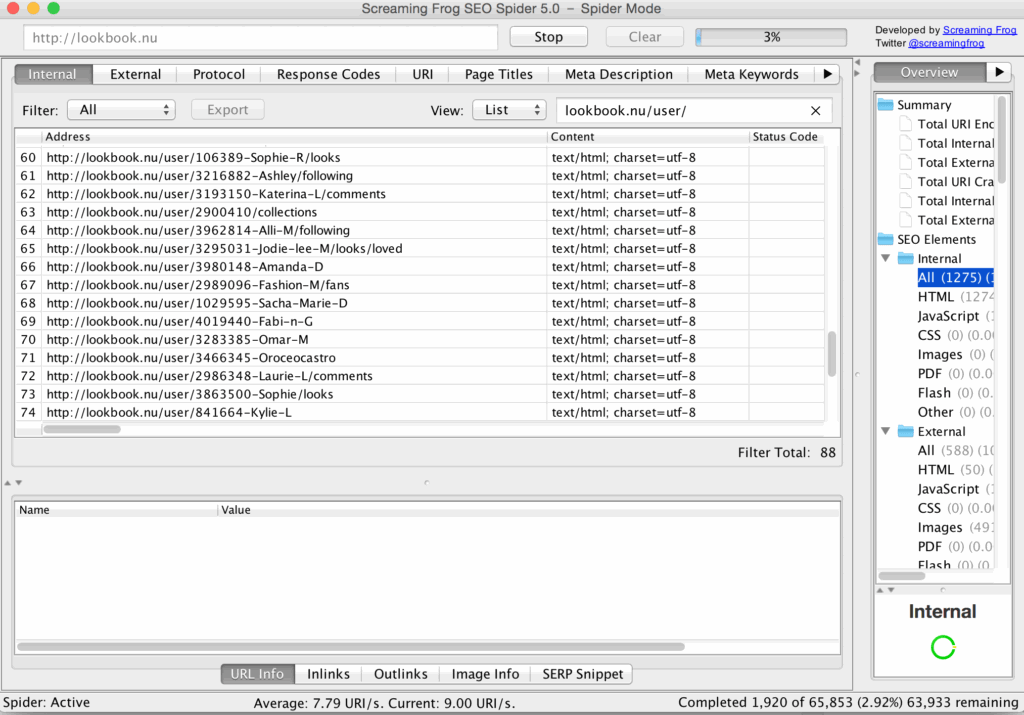
With this list in hand, I could use data cleansing to extract information from each user profile page. For example:
- Full name.
- Location.
- The number of fans.
- Karma score.
- Personal Blog URL.
- E-mail address.
- Social media profiles.
With this information, I was able to sort users by fan base to find the most popular.
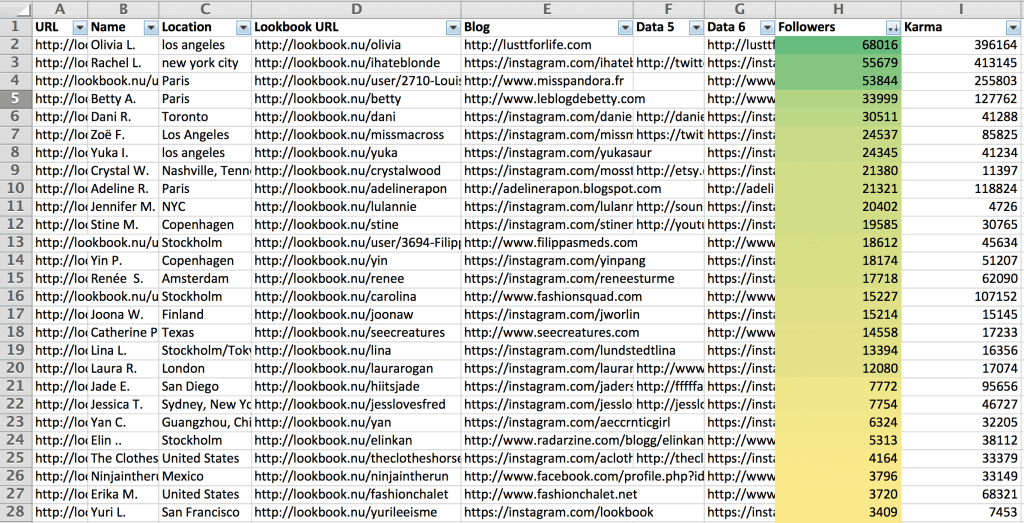
Where any data was missing, I uploaded the user's personal blog to BuzzStream to collect more information about it. This would give me more email addresses to use for coverage.
To make everything as cost-effective as possible, I searched for users located as close to the business as possible (to save on shipping costs) and then rank them by fan base.
It remains only to send them an email to find out if they are interested in working with me.
Here's an example email template I used:
Hello {{Name}} ,
Hope you are healthy.
My name is {{Your name}}, and i work in {{Your company}} ... we {{Brief description of your company}} ... We are currently working with great bloggers like you to take some pictures using our products.
I saw some of your images on Lookbook.nu where you were wearing our brand's products (they looked amazing), so I decided to contact you to see if you would like to style one of our products?
We have a large assortment that you can check here (you can choose any product you like): {{Link to your products}}
Ideally, we would like to get some pictures of how you look using one of our products, which we can share on social networks and on our blog. In addition, we'd love to hear from you if you post the image on your blog and Lookbook.
If you are interested, let me know the following:
1. How much will you charge (we will also add a free product).
2. When you can post a photo (approximately).
Looking forward to your response!
{{Email for feedback}}
The response rate here was overwhelming because it is a mutually beneficial relationship. Bloggers get free products to use in their outfits (as well as more clothes for their wardrobe!).
And I was able to drive traffic to my site, get high quality backlinks, social media load, and some high quality content, photos to use in my own content and product pages.
I found that bloggers will also post on their personal blog, doubling the amount of information we receive.
Example 2: Hunting for a product.
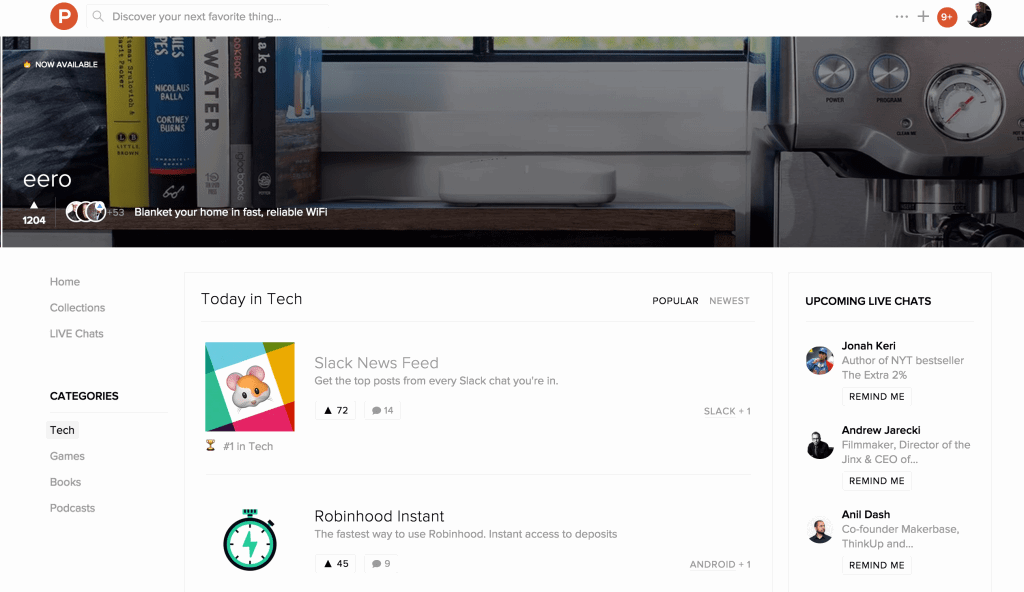
Product Hunt is a community that is fundamentally different from Lookbook. But it is a great tool that can also be used for promotion.
Product Hunt is similar to a daily Reddit channel. It features products that have been voted on.
Each day, products are ranked in descending order based on how many votes they had. Ranking at the top of the daily list can lead to thousands of conversion-oriented traffic to your site, as the creator of Nomad List found out.
Last year I worked on an SEO campaign with BuildFire and we managed to get them to the main product search page, bringing in several thousand visitors in one day and over 250 new customers.
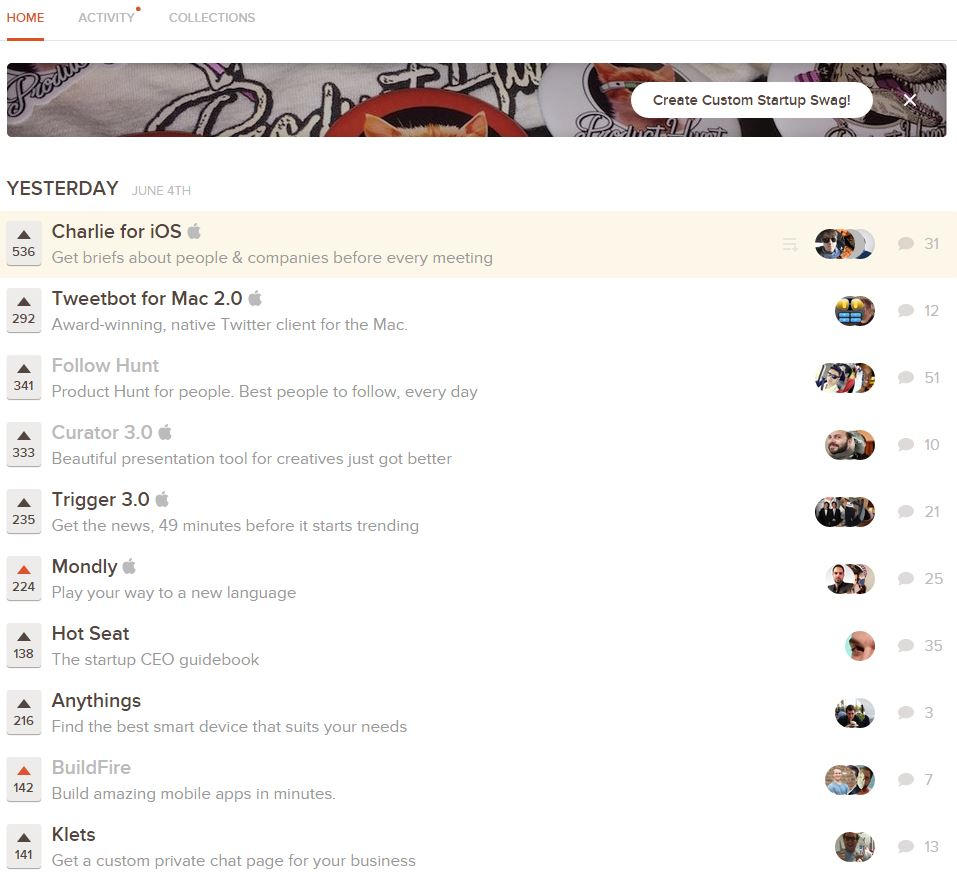
As with Lookbook, you are looking for influential community members to promote your product. This is because an influencer will present your product or get a number of members to vote for you (ideally, you should do both).
Here is my process for inclusion in Product Hunt - exactly the one I used with BuildFire:
Getting the Favorites on a Product Hunt
- If you do not have an invite, you cannot comment or submit a new product to PH. Even so, if you signed up, there is little chance that you were more popular compared to someone influential.
- You only get one chance to participate in Product Hunt, so you will need to find someone who is interested in your startup who also has influence in the PH community.
- To do this, go to Twitter and search for the following query in the search bar: via “on @producthunt” from: producthunt. This will display tweets from the @ProductHunt Twitter account indicating who sent the item (via that person's Twitter account).
- All you have to do is find a product that is similar to yours and then find the person who introduced it. This person would be perfect to introduce yours.
- Once you've memorized a PH member, it's time to reach out to them on Twitter to ask if you can email them. The important thing is not just to ask them to present right now - you first propose to do something for them.
- Send them an email with a brief description of your product and ask them to test it. Perhaps you need to stimulate them somehow. For example, you can give them access for free.
- Once you've built a relationship, ask them to submit your site to PH. You will want to customize your landing page URL to give them special discounts or offers for PH members - this will dramatically increase conversions and also help increase interest in PH.
- In addition to setting up a landing page for Product Hunt members, you can add a banner to your site that displays a discount, or just links to your PH listing (to drive more votes). You can use IntroBar (free) to set it up in minutes and only show it to people coming from Product Hunt.
- Once you have been submitted, you need to ask the sender to tag you as a product creator so you can leave comments. If they have problems, just tweet @ProductHunt.
- Once you can comment, ask the PH community for honest feedback on your product and make sure you respond to any question or comment as quickly as possible - this is what the PH community loves and can provide you with invaluable feedback.
- Follow the link to your product finder list for your social media followers and email subscribers so they can participate in comments and raise their voice.
- Add a call to action on your website to visit the PH page so people can vote or comment - this could be a simple popup.
Getting a feature on Product Hunt doesn't just create a load of short-term traffic; this can result in you getting a ton of coverage in larger publications and a ton of valuable backlinks. Behind Product Hunt's launch, I've seen sites featured at Entrepreneur, Tech Crunch, Huffington Post, Inc, and many more.
4. Acquisition of an existing site.
This is one of the most underrated and least covered SEO techniques. When people think of buying a website, they assume that you have to spend huge amounts of money, but this is not the case.
I picked sites for just $ 2,500, which is about what you would spend in one month on a modest SEO campaign.
Done right, the long term return on investment in a website acquisition is immense.
Key benefits of purchasing an existing website and moving it to your own site:
- You will be absorbing all the traffic of your existing site.
- You will include all the links that were on the site.
- There will be a huge influx of new content to your site.
- Their keyword rank will now be your keyword rank.
- In some cases, you can take over their social media accounts and followers.
- You will see an overall rise in your organic traffic.
This all sounds pretty good, right? I actually wrote an example using this with my own blog a couple of years ago that showed the desired effect.
How much does the website cost?
The value of a website is often measured by the amount of revenue it generates on a monthly or yearly basis. There are many different ways to achieve a fair selling price; one common valuation model is net annual income.
Let's say a website has a monthly net income of $ 250; a rough estimate for this site could be $ 6,000.
There are many other factors that come into play here, but this is a good starting point. If the mailing list is also discussed, then additional fees may apply for each subscriber. The same can be said for social media.
The ideal purchase for a website in the region of $ 5,000-10,000 will have hyper-relevant content. It will be possible to get from 10-20 thousand visitors per month and approximately 200-500 links to root domains.
How to find purchase targets.
It might be a whole blog post in and of itself, but here's a quick overview of the steps I take to find acquisition targets. The ideal goal for me is this:
- The site contains a significant amount of original content that is relevant to my buyer persona.
- There is a good ratio of backlinks to domain root links.
- Currently, the site provides a constant flow of organic traffic every month, which is at least 10,000 unique visitors.
- Over the past few months, no content has been posted on the site that suggests the owner might be more open to selling.
- There are not many advertisements on the site and nothing is sold directly from the site.
Blogs are always a primary target for me because they often have relatively low income and high volumes of content. This means that the owner is more open to selling for a reasonable fee, and I will get a ton of additional content that would be expensive to create and even more expensive to promote.
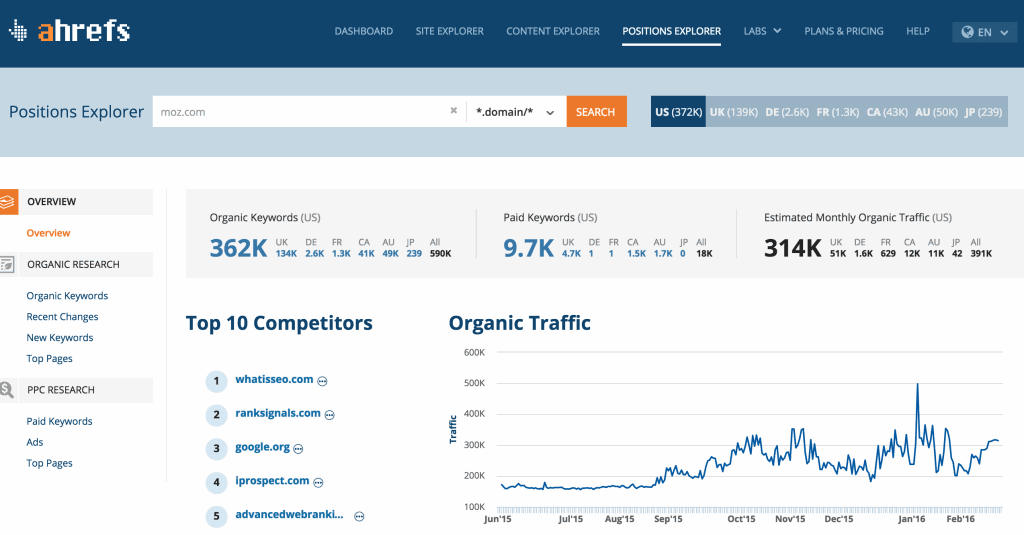
I start by looking for the keywords I aim to rank for. I will check the rankings of the sites on the first two pages and then output them to the site in the positioning tool.
You can view and test some of the keywords their site is linking to, as well as get a rough idea of their monthly organic traffic.
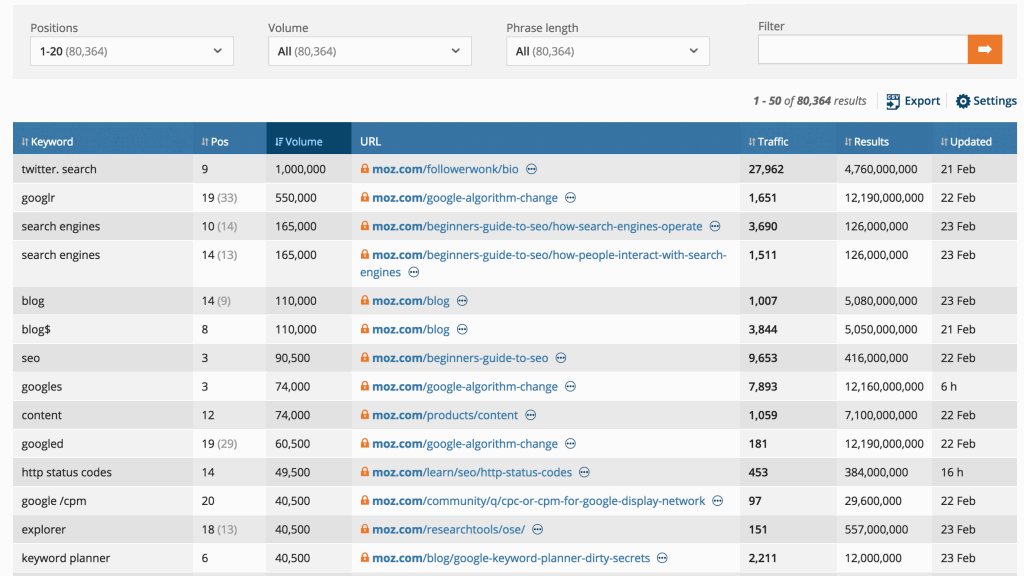
This will help you understand the potential of the website. If you combine this with the data that SEMrush and SimilarWeb have at their disposal, you can get a comprehensive view of the overall website performance.
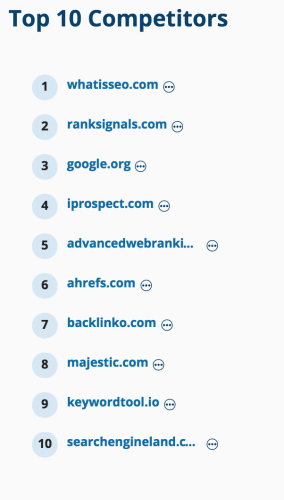
Another tip is to check the Top 10 Competitors list to find many other relevant websites that rank for similar keywords.
What to do after you have purchased the site.
Once you've purchased a website, the next step is to transfer all of their content to your existing website and then redirect everything. All backlinks will be forwarded to you and Google must re-index new pages within the next few weeks.
5. Promote ineffective content.
It's no secret that a large percentage of the organic traffic and leads of most sites comes from a small percentage of the total site content.
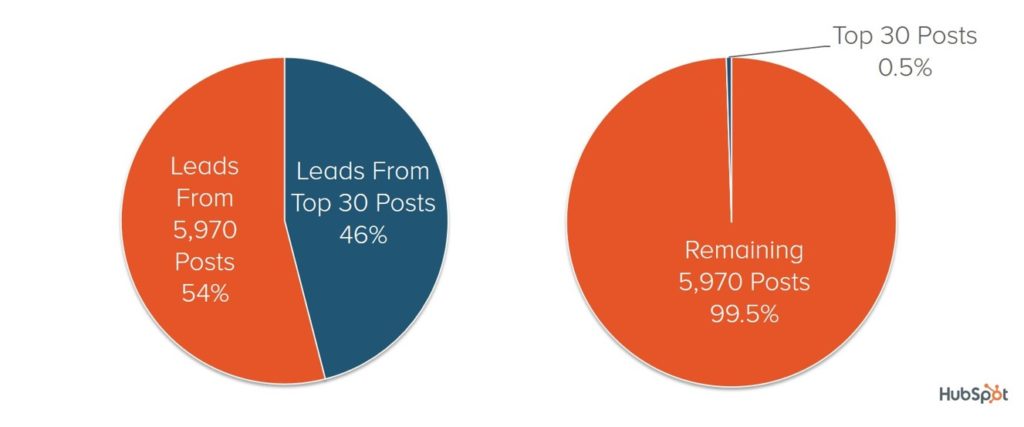
This is certainly the case at HubSpot. And that has been used in most of the projects I've worked on. This will allow you to get a lot of opportunities even if you don't see it right away.
Step 1: Search for keywords.
Open the Google Search Console and navigate to the "Search Analytics" report.

If you check the box at the top to show Clicks, Impressions, and Position, then you will get data on the keywords that generate the most traffic, the most impressions in search results, and then their average position.
The goal is to find keywords that hover between 10 and 25 that you could potentially boost to Page 1 and drive traffic significantly.
Once you find a keyword, click on it and then click the Pages radio button, which will show you which page that keyword is ranking for.
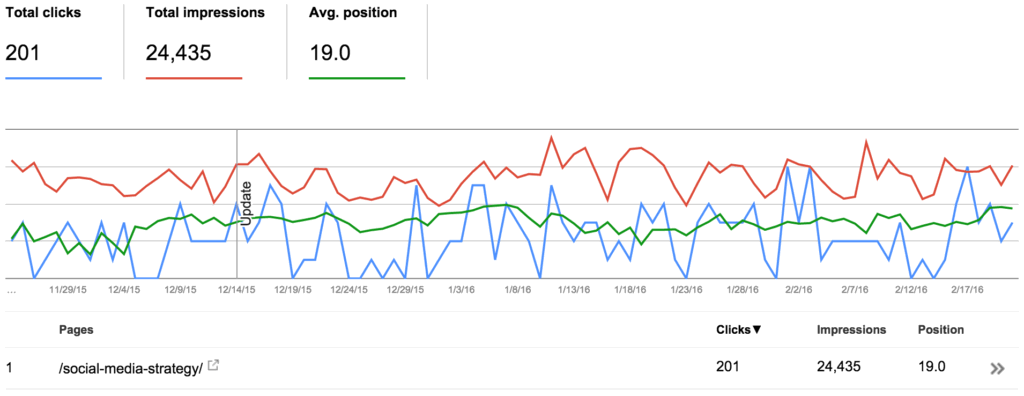
Above is an example from my blog.
Step 2: Find pages from which to push internal links.
The next step is that you want to find pages where you can direct more internal links to your page with anchor text anchored to your keywords.
The first step I take is a quick Google search to find the pages on my domain where I mentioned the keyword so that an internal link can be added.
For this, the following search query will be used. Replace DOMAIN to your domain name and KEYWORD the keyword you are targeting:
website: DOMAIN intext: " KEYWORD "
The next thing you can do is try to add links, where appropriate, to some of your most visited pages on your site. By powerful, I'm talking about the pages that have the most inbound links pointing to them.
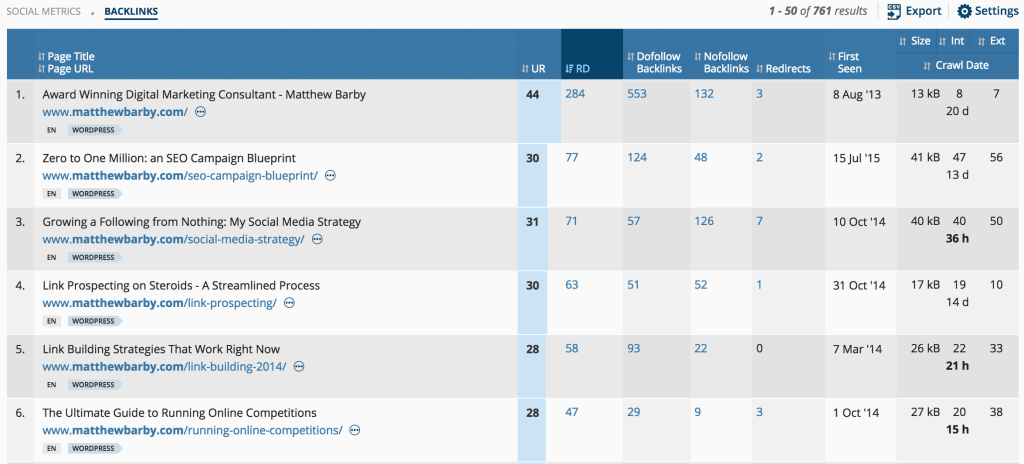
You can find this information using a link analysis tool like Ahrefs or Majestic and then navigate to their Top Pages report.
After you've added the internal links, go through the copy on the page itself and see if there are any changes to the page that you could make. For example, is the keyword in the title tag and H1, etc.?
Step 3: Track the results and scale them.
Whenever I do projects like this, I keep track of the keywords I'm trying to improve in Accuranker, a keyword tracking tool.
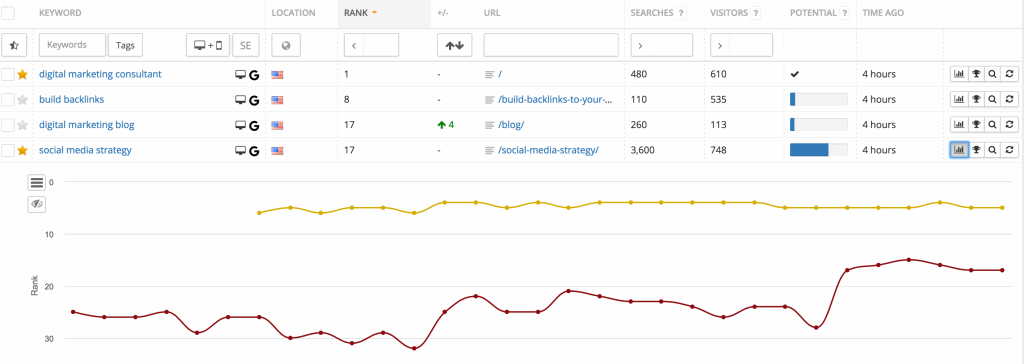
Just upload your keywords and tag them accordingly, then you can receive daily or weekly improvement reports. Once you start seeing the results of this method, start zooming in on it.
6. Analysis of competitors' links.
There are many resources out there for analyzing competitive links. This is the first thing I do whenever I plan a new campaign, regardless of the size of the project. I've done this through campaigns for both local businesses and large companies - it works the same for both.
What does this include?
- Compiling a short list of competitors in your industry.
- Analysis of their sites and the specific web pages that link to them.
- Search for opportunities where you can get similar links.
It's a simple process and doesn't always take long, especially if you've done it multiple times. Using simple, competitive research methods, I found many linking opportunities, including in top-tier publications.
How it's done.
The first step is to use a link analysis tool like Ahrefs, Majestic, or Open Site Explorer to get a list of backlinks for one of your competitors.
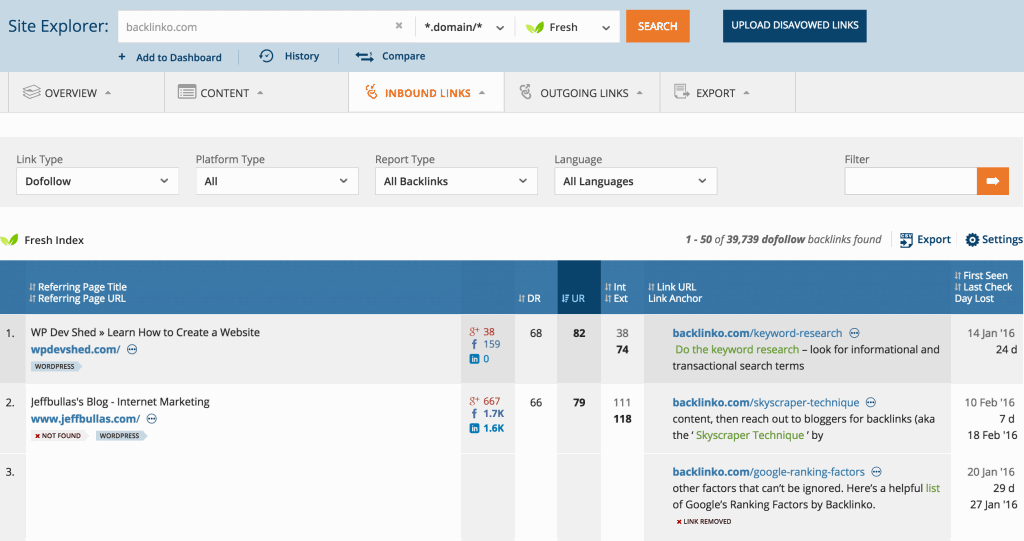
In the example above, I'm checking backlinks from Brian Dean's awesome website, which my blog often competes with in search results.
Just flipping through the web pages that link to him I see a ton of sites where he writes guest posts. These would be my first starting points - if Brian writes for them, chances are they will be interested in me writing for them too, since we cover mostly the same topics.

What follows is the Huffington Post link. I'd love the link from the Huffington Post so I can jump to the article and find out who wrote it. In this example, this is Elena Prokopets. Perhaps reaching out to her on Twitter would help me start building a relationship so I can share some of my content with her?

A few links down and I noticed Brian has a link from WordPress.org. Not bad! It turns out that his content was referenced in one of the WordPress codex posts.
7. Find the questions your customer is asking.
Coming up with good ideas for new content isn't just about finding a keyword that matches your product and then converting it into a blog post. All of your content should directly resonate with your buyer persona.
Whenever I plan a content plan, I start by figuring out what my buyer is asking. From there, you can align questions with relevant keywords to drive growth, but ultimately you will be meeting your prospect's needs.
Step 1: Search for asked questions.
There are a number of places where you can start looking for the questions your customer is asking. My first port of call is Quora.
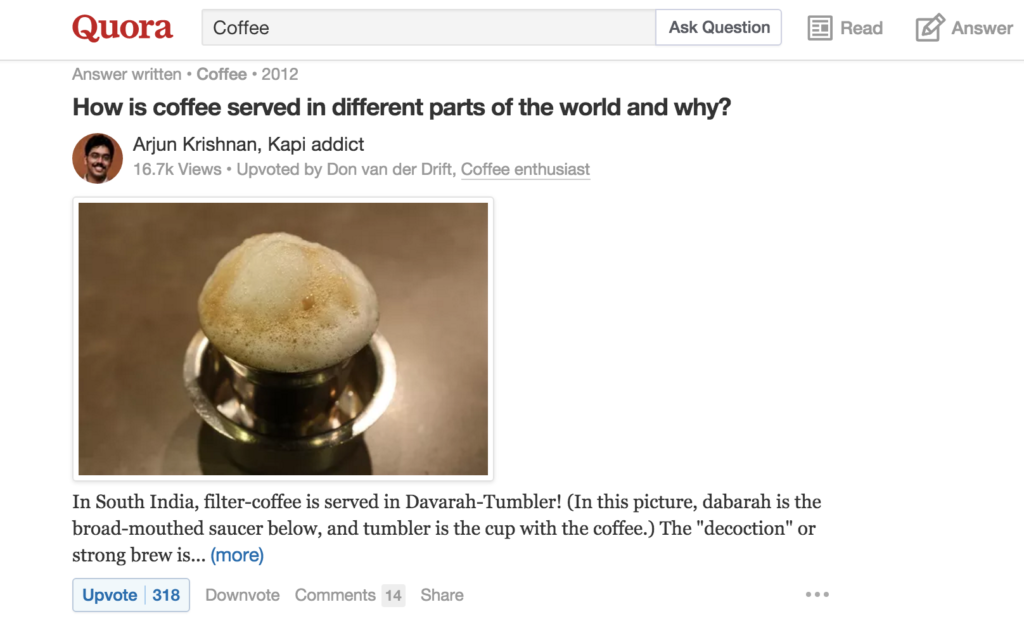
If you don't already know, Quora is a social network focused on users who ask questions and then get answers from people with knowledge in a particular field. Using Quora, you can browse and search for what people are asking for, and then use that information for your content strategy.
The above example is one of many search results based on "Coffee". Other questions that have been asked include:
- Is this soy milk coffee vegan?
- What are the typical markups for coffee shops and the drinks they sell?
- Why do you have to put instant coffee and water in this order in order to achieve proper dissolution?
- How does it feel to be a Starbucks barista?
- What does "java bowl" mean?
- Do Nespresso capsules taste good or is it just a marketing ploy?
If your business is in the coffee industry, you can use some of the examples above to find out what people interested in coffee ask about. This is not limited to popular topics; you'll find hundreds of thousands of Quora questions covering a wide variety of topics.
Another favorite tool of mine is Public Response.
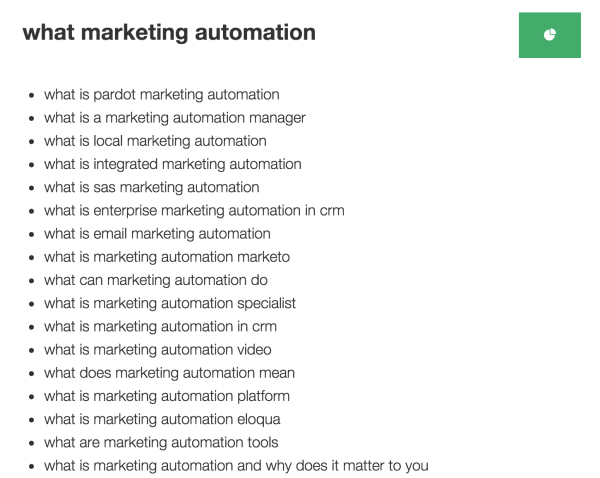
Answer The public is a question-driven search engine. You enter a keyword related to you, and it finds what questions people are looking for around that term. The above example is for a search for "Marketing Automation".

It even gives you the option to download a visual map for your search query to show the range of question options.
The third way I will go is using the internal search data on my site. You can get this data from Google Analytics - here's how you can set it up.
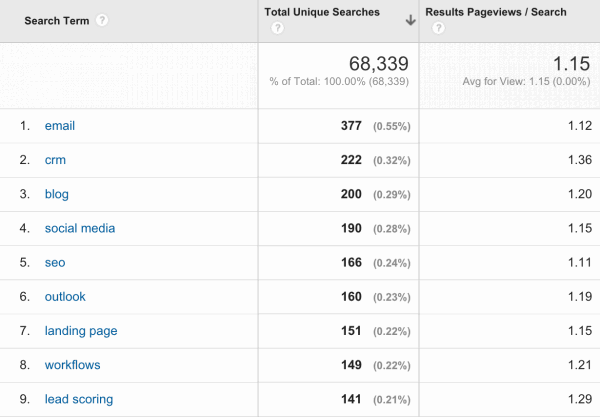
Your internal search data can often help you understand that your users want more information and what questions they have.
Step 2. Aligning questions by keywords.
For each question you find, you'll want to know if there is a way to match it to a keyword that can drive organic traffic to your site.
To do this, start by adding a question to your Google Keyword Planner:

In most cases, you won't get meaningful search rates every month for all of your questions - as you can see below:

If you take a look at some of the suggestions below, you will probably find some possibilities. You can also connect multiple question variants to find the search volume; for example, I could search for "java cup" instead of "what does java cup" mean, and I would get a set of keywords that I can match to the question.
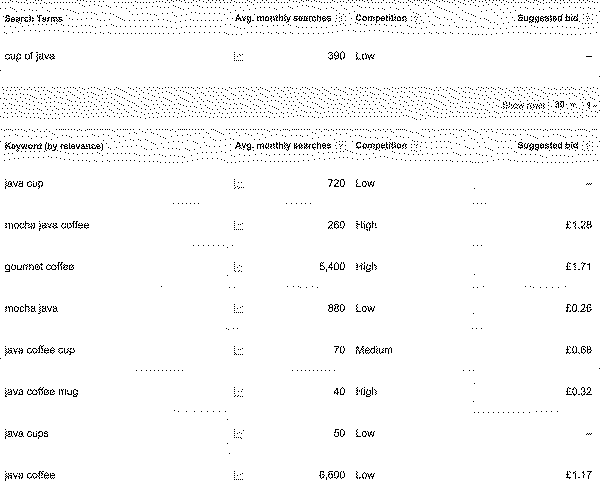
As a result of this search, there are several possibilities, including "java cup", "java cup" and "java coffee", which do at least several hundred searches a month.
Step 3. Aligning questions by content.
Once you have a question and a target keyword, all you need to do now is provide the answer in the form of a piece of content.
You can get creative, but try to make sure you include the keyword in the title of your content and also don't get distracted from answering a specific question that your buyer initially had.
Here are some examples of content ideas:
- Tracking the roots of the java cup
- What is a java cup and why should it be once a day?
- Coffee Basics: What Does "Java Cup" Mean?
Once you start putting together a series of questions and keywords, you can simultaneously assess the need for content using your search volume and validate the idea based on your personality research.
8. Rewrite your video content.
Video content is a great way to grab the attention of your visitors. Facebook users now watch over 100 million hours of video per day on the social network alone, and video is becoming an increasingly cost-effective format for advertisers.
In terms of general search, videos have several problems, especially if you don't host the video on YouTube. The biggest problem is that search engines cannot understand the content of the video.
One way to maximize the number of keywords your video content can rank against is to create full-text transcripts that accompany them.
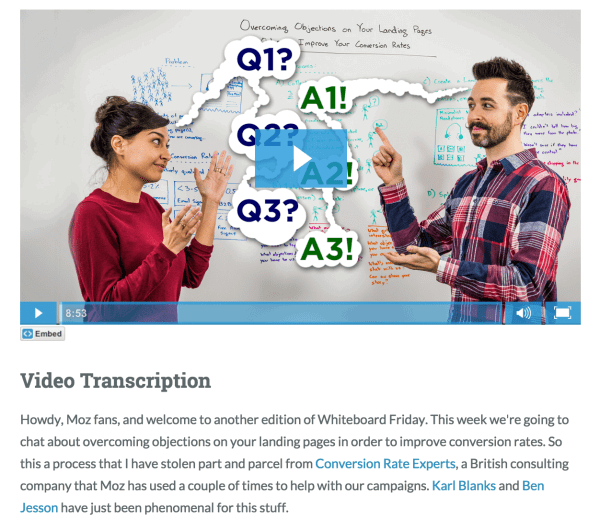
I really love the way Moz makes transcripts of his Whiteboard Friday videos. They don't just insert text underneath their video; instead, they add helpful links, mix text with images within the video, and add additional information that the video doesn't mention.
This not only benefits SEO but also improves the user experience.
If you are looking for a cost effective yet good quality of service for getting text transcriptions, then I would recommend using Rev. I have been using this platform for several years and have always been happy.
It's worth mentioning here that you can also use subtitle transcript for subtitling (which is ideal if you're promoting Facebook videos).
9. Get a column on an industry publication.
One-off guest posts are good and can be useful for driving traffic to your website, but a constant gig for industry publications will bring you serious benefits in the long run.
Not only are you building your name in the industry, but you are also building a relationship that you can engage with regularly to promote new content on your own website and ensure a constant stream of relevant backlinks.
Step 1: Find publications to write.
One of the first places I look at is AllTop.com.

All you have to do is search for a keyword that is relevant to your industry and you will get a list of the best publications and blogs that are relevant to you.

From here, I tend to add a list of relevant blogs to the spreadsheet so that I can do further analysis on them.
Step 2: Search for opportunities.
For each of the websites that are on the list, you should find out if there is an option to become a browser.
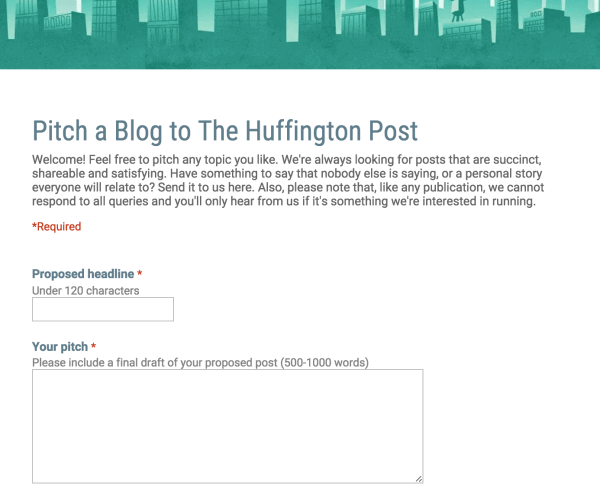
To speed it up, you can use the following Google search term. Just replace DOMAIN domain name of the site:
website: DOMAIN intitle: write to us
This should give you a quick idea of whether they have a page on their site that details how you can apply to become a writer.
Some sites, like the Huffington Post, will ask you to share your idea with them first. This is the perfect starting point to show your worth to request something longer.
Step 3: Establish contact.
If you have multiple websites that you want to write about, you need to refer to them. Before you start emailing them, do the following:
- Update your LinkedIn profile to include where you've previously posted content.
- Leave a few detailed comments on some of the articles on the website you added information to (this is a good part of the conversation).
- Share relevant content from your Twitter account and include in your bio that you are a writer or reviewer.
- If possible, create a portfolio on your website (or elsewhere) that showcases other content you've written.
Once you've done that, here's a good email template that you can use. Just make sure you personalize it for every post you link to:
Topic: Columnist for {{Publication name}}
Body: Hello {{Name}} ,
Hope you are healthy.
Just contacting because I am a reader and a regular commentator {{Publication name}} ... I {{Position}} of {{The name of the company}} , {{On-line Business Description}} .
Strive to further strengthen my industry reputation by writing a few select key {{industry types}} publications (which is why I am contacting you).
I am currently a regular member {{Website Name}} and {{Website Name}} , among several others (including my own blog - {{URL here}} ), and it would be great to collaborate with {{Site name}}, to become a columnist.
You can check my full credentials on my LinkedIn page (I sent you a connection request today) - {{LinkedIn Profile URL}}
Here's an example of some recent articles I've written:
- Article url
- etc.
I had {{X Number of Years}} industry experience {{Industry type}} so I have a lot to offer your readers. Along with that, I would be happy to meet any deadlines you set.
Let me know if you need more information.
Looking forward to your response.
{{Signature}}
10. Update and republish old content.
If your blog lists your individual posts in order of their publication date, as most blogs do, then the older your blog post gets, the lower its architecture.
In general, the higher the architecture of the site, the more powerful the page is. This is the reason why the home page of most websites is usually the most powerful.

As your blog posts age, they delve deeper into the architecture of your website because you have to go to page 2, 3, 4 or more of your blog to find them - and Google has to do the same.
A good little hack that I regularly use to improve my old content is to update the old post with additional content and exchange any old links, then I will change the post date to the current one and repost it.
Two things happen here ...
- You've added more relevant content to your blog and increased on-page SEO by targeting keywords.
- You just pushed blog posting a few levels higher in your site architecture because it will now be on the first page of your blog.
This is what we regularly do at HubSpot and we have seen some amazing results.
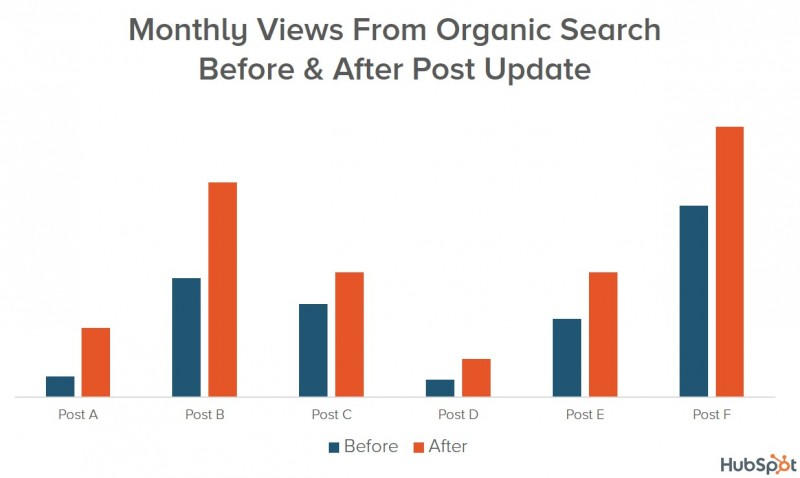
The graph above shows the impact of the test on 6 different blog posts.
Given the effort versus the results here, I highly recommend you try this, especially if you have a lot of existing content on your site.
11. Launch co-marketing campaigns.
" Joint marketing is when two companies work together to promote a joint proposal. As part of joint marketing, both companies promote some of the content or product and share the results of this promotion. "
Amanda Sibley
Co-marketing is a very powerful way to engage an audience larger than your own to generate leads, connect, engage with the public, and more. It's not just for big brands.

BuzzSumo and Moz ran a great co-marketing campaign in September 2015, where they analyzed a million articles to find out what content went public and what it is related to.
They offered a 30-page report with the full results of their research, which was available for download via the landing page on the BuzzSumo website.
To promote their content, each brand posted a blog post, shared it on their social media accounts, and sent out an email to their followers.
The effect of increased communication between the two combined audiences means that they reach an even larger group of people than their combined followers.
The collected data collected can then be shared with both brands and used to increase sales.
I've run a lot of collaborative marketing campaigns in the past, and this doesn't always involve a large audience to share.
It certainly helps, but if you have any original data or understanding that you want to co-brand with another company, you have the opportunity to conduct a co-marketing campaign.
Some examples of ideas for joint marketing campaigns might include:
- Joint case study
- Report based on original data from each brand
- Charitable purposes
- Events (for example, a joint meeting at the local level)
- Incentive or reward campaign
- Joint webinars
- Online courses or trainings
12. Consolidation of content cannibalization using redirects.
The concept of content cannibalization is something that a lot of people struggle with. To make it a little easier to understand, I'll give you an example.
So, you have two pieces of content, and they cover a relatively similar topic. Let's put it this way: these are the names of two pieces of content:
- Understanding the healing properties of herbal tea
- 17 Ways Herbal Tea Is Good For You
In this example, a big keyword that you might be focusing on when ranking is “Herbal Tea”, which is searched 22,200 times a month.
In this example, article 1 ranks number 5 on page 1 of Google as “Herbal Tea,” and article 2 ranks at the top of page 2.
If I asked you which would you prefer:
- Both article 1, ranking 5th, and article 2, ranking 6th at the same time on the first page.
- Article 3 rating on page 1 and article 2 do not appear on Google at all.
A lot of people would choose option 1. I mean, it's better to have more properties on the first page of Google, rather than jump two places and lose a whole other listing, right? Wrong .
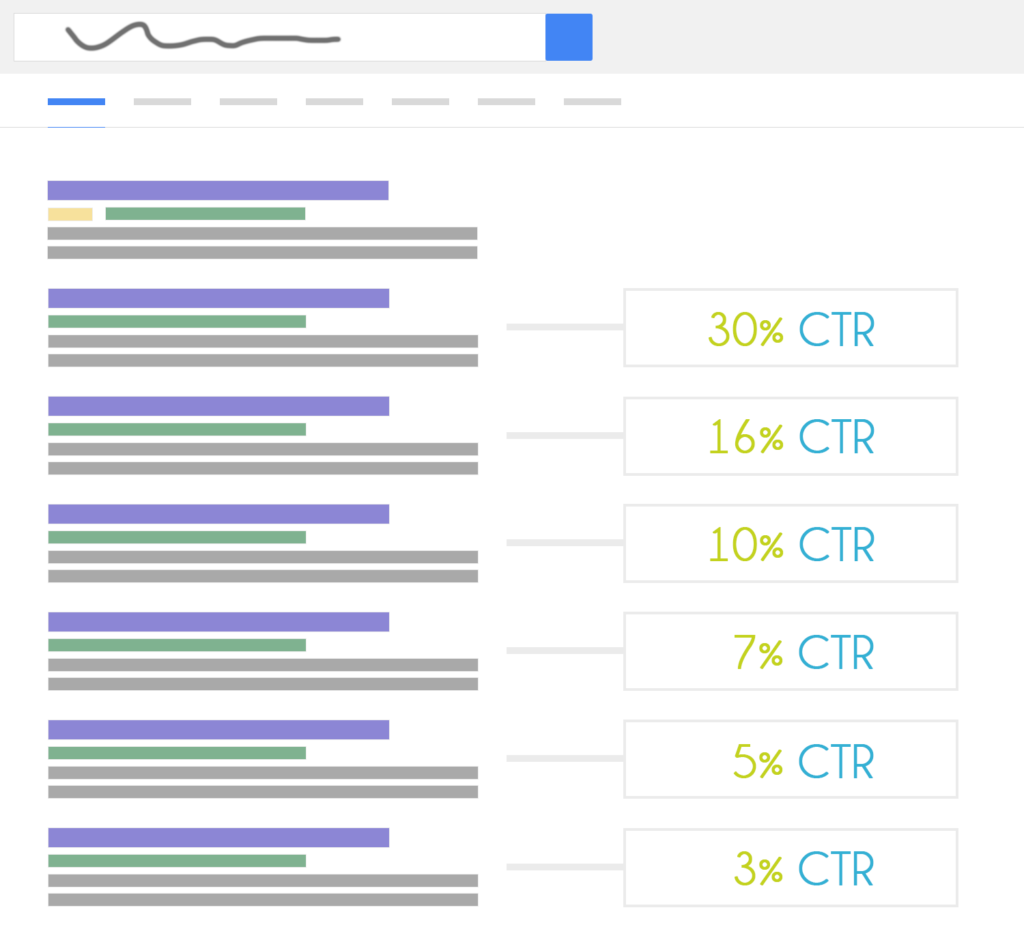
If you look at the image above, you can see a breakdown of the average click-through rate by position on Google Page 1.
Using the Herbal Tea example, we could estimate the following traffic volume each month for each of these positions (based on 22,200 searches per month):
- 6660
- 3552
- 2220
- 1554
- +1110
- 666
If we were in positions 5 and 6, we would expect a total of 1,776 visitors per month. Now, let's compare that to the complete loss of Article 2 and having Article 1 in 3rd place: 2,220 visits per month.
That's 25% more visits.
When to consolidate content.
As I explained above, in terms of traffic generation, it is better to have one higher ranked content than two lower ranked ones. Also, you should take into account that in order to rank two different pieces of content, you will have to spread your resources across two different resources.
Consolidating two pieces of content by adding a redirect to a low-performing chunk is often an incredibly simple and quick SEO win you can realize.
One of the main reasons why you will see an increase in rankings is that any links that go to your underperforming content will now redirect to your better performing content, adding to existing links and making it more attractive. authoritative in the eyes of Google.
However, this is not a decision that you have to make lightly.
Whenever you are evaluating whether to consolidate an underperforming piece of content, you need to delve deeper into the following:
- How old is the content? If you've only recently published it, you may need to give it time to see how it works before drawing conclusions.
- Is this driving traffic beyond organic search? The content may be bringing in a lot of referral traffic or social media traffic, so you might be losing some valuable traffic by consolidating it.
- Does the content rank well for other keywords? Outside of the main keyword you're viewing, is the content ranking well for other keywords that drive traffic? If so, you may need to reconsider.
- Are there any other use cases for the content? Is this piece of content much better than your primary traffic driver? Is it more of an educational element that adds value to your buyer persona?
Make sure you carefully evaluate all of the above areas before deploying any redirects.
13. Link to Influencers in your content.
Contrary to popular belief, links to relevant external sites do not directly affect your search rankings.
However, links to content written by influencers in your industry can help spread your content. This is what I have been doing for years and continue to do to increase the conversions of my emails.
In fact, I even used this technique to start building relationships with influential niches where I could then continue to work with them on things like co-marketing or building guest placement opportunities.
The typical process I follow to get the most out of this is:
- List the content I create that will affect my content.
- Find specific resources from every influencer I can connect with.
- Collect social media accounts and email addresses for each influencer.
- Publish my content with links to resources written by influencers.
- Email each influencer to let them know they are featured.
- Mention them in a tweet with a link to the content, or tag them in an image in a tweet.
This simple process greatly increases the likelihood that people will share your content. Another thing I like to do is ask influencers to take my content up to the influencers I have shared with in order to get trending and drive more traffic.
14. Create a linkable asset.
Links are still the most important to rank for competitive keywords. This even applies to huge reputable sites like HubSpot.
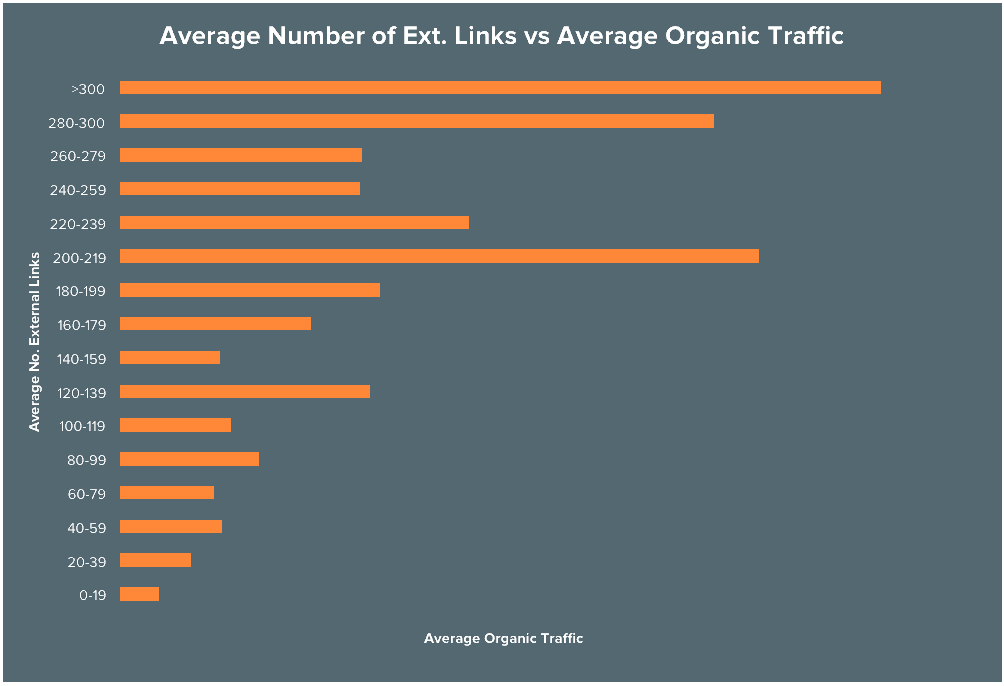
The above graph is from a research I did on the HubSpot blog. It shows a huge positive correlation with the number of backlinks a URL had and the amount of regular search traffic it generated.
In short, even for websites that have tons of links pointing to their domain, they still need to earn links to their individual pieces of content in order to rank well.
The only problem is that backlinks are hard to earn.
One way to rank for more competitive search terms is to create highly connected resources that either aim to rank for that keyword or to pass internal links to another piece of content you want to rank.
Step 1: Who will link to you?
Before you start creating some useless infographic that has absolutely nothing to do with your brand, think about who might be linking to it?
In many cases, this may not be your customer's persona. If your buyer has the ability to link (that is, they have a website and they actually mention your content and link to it), then you may be able to reap even more benefits, but in many cases it will be slightly different from people. who will buy from you.
Typically, the big links you can go to will be from publishers (like editorial posts and blogs).
For example, you can create visualizations of average wages for individual states in the United States. This kind of content is the main target for Wall Street Journal selection, etc.
In fact, here's an exact example of this in action (with a link from WSJ and many others!).
It is also worth living up to expectations here. Setting a goal for yourself to get links from the WSJ is very difficult. If this is your first time doing this, set the bar slightly lower and move up.
Step 2: Conceptualize the idea.
I always start this process by looking at which ideas work well in my industry.
Go through and use a tool like BuzzSumo and find trending content in your industry or around a topic related to your business.
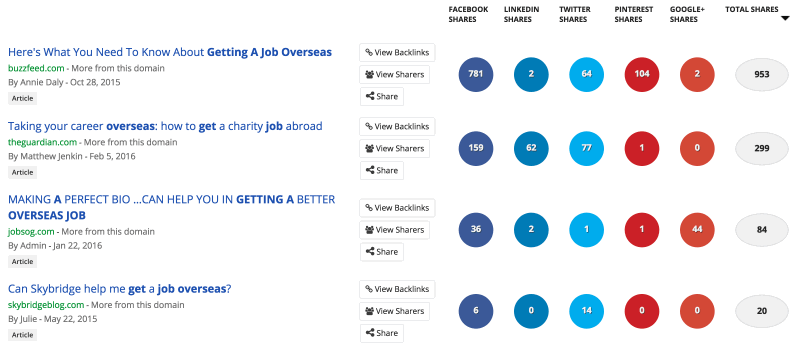
By taking a look at high-performance content, you should be able to get an idea of the specific aspects you can use, as well as how to format the content.
Just make sure you start with a good idea before deciding on a format. I see too many people start their idea process by saying, "I want to create an infographic."
Infographic creation is not an idea, but a format.
Step 3: Choose a format.
One way to differentiate your idea from another is to do something a little different with the way you format it. Just make sure you reach out to people who will link to you.
Here is a list of several different content formats you can explore:
- Text Articles
- Infographics
- Video
- Mobile or web applications
- Interactive guides
- Tools or software
- Quizzes or Reviews
- Electronic books
- white papers
- Memes
- Testimonials
- Charts
- Lists
- Case studies
- Interview
- checklists
- Questions and answers
- Tutorials
- Podcast
- Illustrations
- Webinars
- Bookmarklets or browser extensions
These are just a few ideas for you to check out.
Step 4: Make sure you are solving the problem.
This is always a little test of meaning, which I usually do when creating something big. I am asking myself if I am really solving a problem that someone else might have to link me up.
Let me give you a couple of examples.
Example 1: Netflix Bookmarklet 'God Mode'.
Problem: " Our target market is following Netflix, but they hate the interface. "
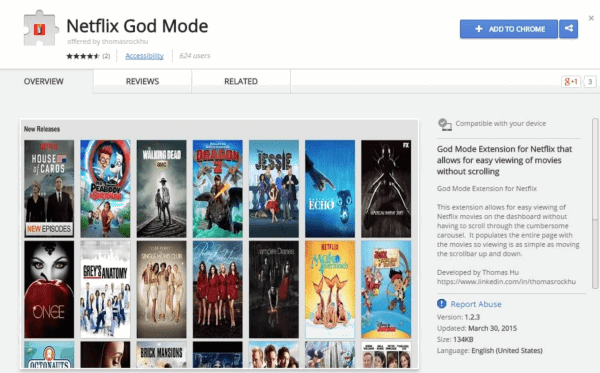
Decision: Netflix god mode
Statistics: 482 links from 191 websites, including CNN and the Huffington Post. Top 10 Product Hunt and 600+ Social Promotions.
Example 2: Buy or Rent Calculator.
Problem: "Our target market is having trouble figuring out how best to approach their first home."
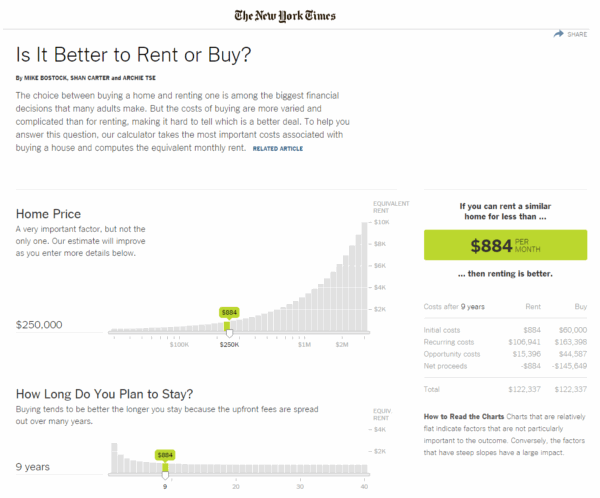
Decision: NY Times
Statistics: 296,000 backlinks from 2,440 websites. More than 90,000 social events.
Press Inquiry Notices.
Press inquiries are an absolute goldmine for valuable links. A lot of people may be put off by them because of the amount of time it can take each day to go through them all, but they probably don't hack the process like I did!
In short, press request notices are requests for information sources from journalists. Let's say you're a journalist writing an article about wearable technology for The Guardian.
Perhaps you need a quote from an industry expert or some products you can include in your article? Well, all you have to do is send a request to the press office and you can wait for someone to answer you.
All you have to do is send these requests to your inbox and then reply. A couple of years ago, I responded to a journalist request from The Guardian and posted a link from their website. It took me less than 2 minutes to respond.
Here's an example of what a typical query might look like:
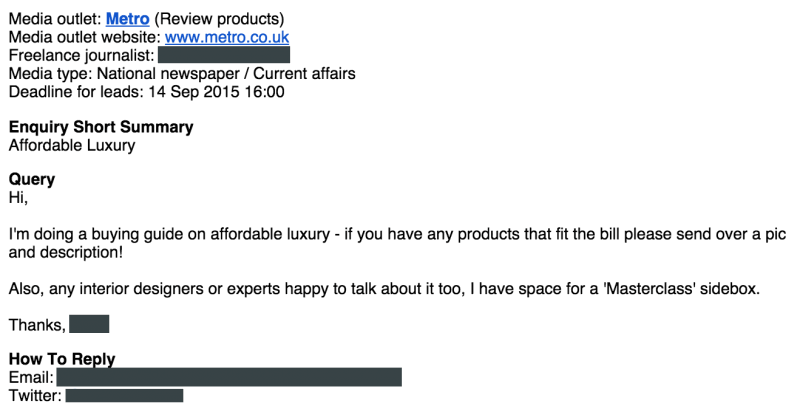
Honestly, it's as easy as answering emails.
Step 1. Sign up for press inquiries alerts.
The first step is to sign up for a service that sends you alerts from journalists. There are many of them, and each has its own pros and cons. Here's a list to get you started:
- HARO (one of the most popular free services)
- ResponseSource (a paid service focused more on the UK)
- Muck Rack (paid service)
- Gorkana (paid service)
- Source Bottle (free service)
- Press Quest (Free UK service)
- NARO PR (free service)
- #JournoRequest (Twitter hashtag used by journalists)
- #PRrequest (Twitter hashtag used by journalists)
Step 2: Organize your mailbox.
You will receive a ton of emails every day with requests from journalists. Only one of these services will run 50 to 100 requests per day, so make sure you are prepared for that.
To clean up the mess, here's the process I use for my email:
- Create separate folders in your Inbox for each of the different services you subscribe to (for example, ResponseSource, HARO, Muck Rack, Source Bottle, etc.).
- Create rules for new emails from each of these services so that they are placed in the appropriate folders (as is done for Outlook and Gmail).
- Create subfolders under each main folder that are divided into different themes. For example, I have folders labeled Growth, SaaS, SEO, Startups, etc.
- Create additional rules for any email you receive that includes keywords specific to each subject, which will be stored in the appropriate subfolder. For example, any request mentioning SaaS will end up in my SaaS subfolder.
- The last thing I do is create rules for any emails from these services that will flag emails that come from the publication I'm targeting. In my case, I have notices of any press inquiries coming from Forbes, Entrepreneur, Wall Street Journal and a few others.
Tip: Receive SMS alerts.
The faster you respond to important inquiries, the more likely you are to be introduced. For really valuable inquiries, you can use IFTTT to send you an SMS when a request comes in according to certain criteria.
I created an IFTTT recipe that sends me SMS messages whenever I get an SEO request. You can edit this recipe according to your needs.
Step 3: Respond to requests.
The key here is to keep it short and accurate.
Here's the email template I'm using, but you'll need to customize it accordingly:
Topic: HARO: {{Indicate the topic that the journalist asked you to comment on}}
Body: Hello {{Name}} ,
My name is {{Your name}} , {{Your position and company}} ... Here are my answers to your questions:
- One or two sentences (max.) With a comment related directly to the reporter's question.
- One or two sentences (max.) With a comment related directly to the reporter's question.
- One or two sentences (max.) With a comment related directly to the reporter's question.
- One or two sentences (max.) With a comment related directly to the reporter's question.
Let me know if you need anything else.
{{Signature}}
16. Create an expert review.
Expert reviews seem to be all over the place these days. To be honest, I'm a little fed up with them because most of the time they are full of answers from people who don't even know the subject.
However, they are a great tool for building relationships with influencers.

In my experience, peer reviews don't convert very well and don't bring in many links. On the other hand, they are pretty widespread on social media. This mainly depends on the individual participants in the messaging with their network.
Rather than creating peer reviews to stimulate social engagement, connections, and leads, I use this for a different purpose:
Building relationships.
Let's say you want your content to be linked to or shared with an influencer within your influencer; simply sending them a cold email asking them to do so can result in very low conversion rates.
On the other hand, if you already have a relationship with this person, you may see better results.
This works especially well for leveling the capabilities of a guest blog.
Typical process I follow:
- Gather a list of influencers with whom I want to form a relationship.
- Contact them to participate in the expert meeting by answering a simple question.
- Email them when the post is posted and subscribe asking if I can keep in touch with future projects.
- After a few weeks, contact them again to ask what I really want (guest post capability, etc.), thanking them again for participating in the previous expert review.
I guarantee this will improve your results.
17. Build your content in thematic clusters.
Before I dive into the details of this, let me explain what a topic cluster is:
"A thematic cluster is a collection of semantically relevant content that individually covers smaller topics in a general topic."
Let me explain this with an example, so it makes a little more sense.
Let's say the main topic you're talking about revolves around training programs. There are several articles on your website that could fall into this topic cluster; eg:
- 11 best workouts for men
- Spring body workouts
- Build muscle with 5x5 workout
- 27 fat burning workouts for women
Having large groups of content that all revolve around the same topic will create more relevance around the keywords you are trying to rank for in those topics, and this will make it much easier for Google to link your content to specific topics. Not only that, but it also makes it much easier to link your content together by pushing more internal links through your site.

Building thematic clusters on your domain is becoming more and more important from an SEO standpoint. The above diagram shows a thematic cluster for SEO. This is how I structure my editorial calendars to ensure that each of my main topics is relevant.
Using this basic approach, I was able to rank a large number of highly relevant keywords that are driving valuable traffic to my site.
18. Seed action on big content.
One mistake many people make when planning to launch a large amount of content is that they rely too much on the quality of the content to provide organic lighting.
Whenever I launch a large chunk of content (including this one), I make sure that I launch the promotion myself to give it the best chance to continue working organically.
To do this, I often combine my content launch with a couple of guest posts on relevant websites to drive a load of relevant traffic to them, as well as some relevant links.
This affects the natural enhancement of the content and means that you at least have something to show for the content (in terms of ROI), if not organically as you expect.

An example of where I did this might be when I put together a blog post that outlines a social media strategy that I implemented in a side project I was running.
Before getting started with this post, I wrote an example for the same project, which relied heavily on the information I explained on my blog.
I sent this to Moz to post on their blog four days after I posted my post.
Not only did this generate a second influx of traffic after launching my blog post, but it also helped generate a number of valuable links and social media.

As a result, my blog post was ranked for some highly competitive terms early on and continues to generate valuable search traffic and new links every month.
19. Get product reviews using Influencer platforms.
If you are promoting a product or range of products, you can use influential platforms to connect with bloggers who can promote you.
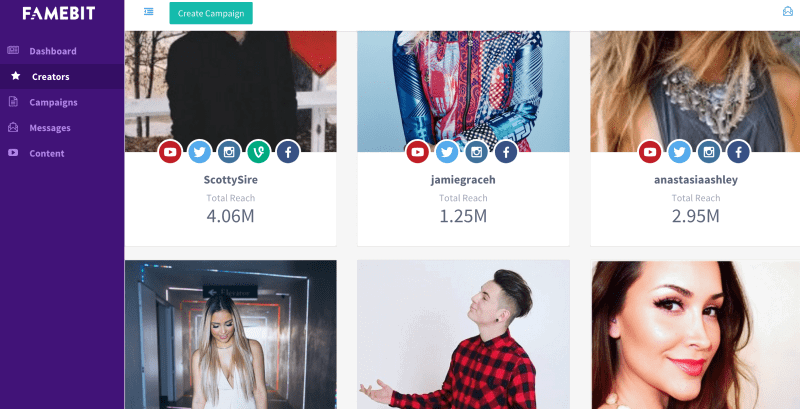
Two examples of these platforms are Famebit (above) and Tomoson.
Both of these platforms enable brands to find influencers to promote their product range.
I have personally used these platforms in the past to team up with bloggers to produce and publish some video and photo content that ended up generating a ton of traffic.
Depending on how influential the person you are working with is, the price can vary. I only paid $ 100 per campaign, but I also worked on projects where we spent more than that. The good thing here is that there are often a number of different people you can partner with that match your price range.
Frequently asked questions about SEO.
✔️ What mistake do people make when launching content?
People, when planning to launch a large amount of content, tend to be fixated on its quality.
✔️ How to increase your content reach?
Get influential people interested in this.
✔️ How to attract influencers?
Create mutually beneficial conditions. For example, you can submit a free product for a test to a blogger and ask for feedback on this product on his blog.
✔️ What do keywords do?
Keywords can drive organic traffic.





2 thoughts on “SEO советы для увеличения органического трафика в Google.”